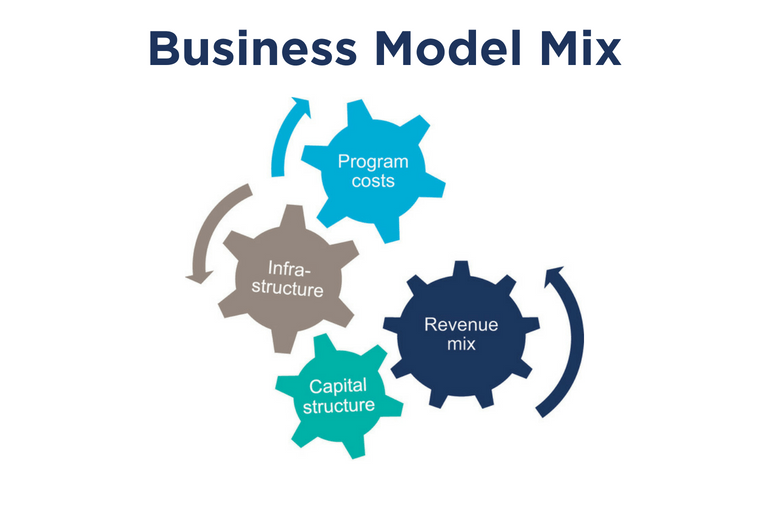Top Nonprofit Company: Assisting Charities and Organizations Achieve Their Objectives
Top Nonprofit Company: Assisting Charities and Organizations Achieve Their Objectives
Blog Article
Evaluating the Difficulties and Opportunities Dealt With by a Nonprofit Firm in Achieving Its Mission and Goals in Today's Culture
In the existing landscape, nonprofit companies are browsing a complex variety of obstacles, such as varying funding resources and raised competitors for contributor involvement. These difficulties, while intimidating, can also open methods for development and cooperation that might improve their ability to satisfy objectives. By examining exactly how nonprofits can purposefully adapt to these characteristics, we can uncover not only the methods they use to get over challenges but also the untapped possibility that exists within their operational structures. What continues to be to be seen is how these organizations will certainly harness these chances to redefine their effect in society.
Existing Landscape for Nonprofits
The current landscape for nonprofits is identified by a complicated interplay of evolving funding models, heightened competitors for benefactor focus, and enhancing demands for accountability and openness. Not-for-profit organizations are increasingly expanding their income streams to include gives, individual contributions, business sponsorships, and social business initiatives. This change shows a calculated reaction to standard funding resources becoming much more competitive and unforeseeable.
In addition, the surge of data systems has transformed just how nonprofits involve with possible contributors. Social network, crowdfunding, and online projects are currently necessary devices for getting to wider audiences, yet they also escalate competitors among organizations trying limited sources. In this environment, nonprofits have to fine-tune their messaging to properly catch the passion and dedication of supporters.
Additionally, stakeholders are demanding higher openness regarding how funds are designated and the quantifiable influence of not-for-profit activities. This trend requires that organizations embrace durable accountability steps, consisting of thorough reporting and analysis frameworks, to show their effectiveness. As a result, the not-for-profit sector is browsing a landscape that requires cutting-edge reasoning, tactical flexibility, and a commitment to ethical methods in order to flourish amidst these vibrant difficulties and chances.
Trick Obstacles Run Into
Browsing the not-for-profit industry offers a myriad of difficulties that can impede organizational performance and sustainability. Among one of the most important problems is the dependence on irregular financing resources. Nonprofits usually depend on grants, donations, and government support, which can change dramatically, leading to economic instability and difficulties in lasting preparation.

Personnel retention and volunteer engagement pose more obstacles, as numerous nonprofits struggle to use competitive wages and advantages. The high turnover prices can interfere with business continuity and influence service shipment.
Moreover, adjusting to technological advancements and digital improvement remains an obstacle for lots of nonprofits. A lack of sources and competence can prevent organizations from leveraging technology successfully, thereby restricting their outreach and effectiveness.
Eventually, these obstacles need nonprofits to use critical planning and ingenious strategies to keep their mission and ensure sustainability in a complicated landscape. nonprofit agency.
Arising Opportunities
Just how can nonprofits harness arising opportunities to enhance their effect? In today's quickly advancing landscape, nonprofits have the opportunity to leverage technical advancements, changing social dynamics, and enhanced public recognition to sites further their objectives. The rise of electronic systems enables companies to broaden their reach, engaging with diverse audiences and fostering neighborhood connections. By utilizing social networks and on the internet fundraising tools, nonprofits can enhance visibility and attract younger donors that are a lot more likely to support causes they resonate with.
In addition, cooperation with businesses and other industries is becoming a lot more widespread, offering nonprofits with accessibility to resources, know-how, and innovative services. Collaborations can amplify efforts, drive community interaction, and create sustainable influences. Additionally, the growing focus on business social obligation uses nonprofits chances to straighten with organizations that prioritize social impact, obtaining financial backing and shared goals.
The raising concentrate on explanation data-driven decision-making enables nonprofits to better analyze their programs and results, improving responsibility and performance. By welcoming these arising opportunities, nonprofits can not just strengthen their functional capabilities however additionally broaden their influence in dealing with pressing societal problems, eventually driving purposeful change in their areas.
Strategies for Adjustment
Adapting to a regularly transforming setting is vital for nonprofits aiming to maintain their influence and effectiveness. To browse the complexities of modern society, nonprofits need to execute strategic strategies that improve their strength and responsiveness.
One trick method includes leveraging technology to expand and enhance operations outreach. By using electronic systems, nonprofits can enhance interaction with stakeholders, improve fundraising efforts, and increase understanding of their goal. Additionally, taking on data-driven decision-making techniques permits companies to examine their programs' performance and change methods based upon empirical evidence.
Partnership with other organizations-- both nonprofit and for-profit-- can cultivate resource sharing and advancement. nonprofit agency. Collaborations can cause common proficiency, moneying chances, and expanded networks, inevitably magnifying the collective impact
In addition, growing a culture of adaptability within the organization is crucial. Educating personnel to embrace adjustment and urging innovative problem-solving can encourage groups to respond properly to arising challenges.
Study and Success Stories
Successful adjustment techniques in the nonprofit market can typically be illustrated with compelling study and success stories. One remarkable example is the "Feeding America" network, which changed its procedures during the COVID-19 pandemic. By leveraging technology and community partnerships, the company scaled its food circulation efforts to satisfy the unmatched need, offering millions of households who faced food insecurity.
An additional impactful instance is the "Boys & Girls Clubs of America," which adjusted its programs to a virtual layout throughout lockdowns. By presenting on the internet mentorship and interesting activities, they maintained links with young people throughout the nation, ensuring ongoing support and advancement despite the difficulties positioned by social distancing.
Likewise, the "World Wild Animals Fund" has efficiently incorporated community-based conservation strategies, empowering regional populaces to get involved in wildlife protection efforts. This technique not just fosters community ownership however likewise boosts eco-friendly sustainability.
These study highlight exactly how nonprofits are not just resolving instant obstacles but are also producing long-lasting remedies that align with their objectives. By sharing such success tales, companies can influence others to introduce and adjust, eventually driving favorable modification within their neighborhoods.

Final Thought
In conclusion, not-for-profit companies today browse a complex landscape identified by financial instability, competitors, and workforce obstacles. Eventually, addressing both opportunities and obstacles will be crucial for nonprofits to accomplish their missions and attain long lasting effect in society.
In the existing landscape, not-for-profit companies are navigating a complex selection of obstacles, such as varying financing sources and increased competitors for donor involvement. The nonprofit sector is navigating a landscape that requires cutting-edge reasoning, calculated versatility, and a commitment to ethical techniques in order to prosper in the middle of these vibrant difficulties and go now possibilities.
Browsing the nonprofit industry presents a myriad of obstacles that can prevent organizational efficiency and sustainability.In verdict, not-for-profit companies today browse a complex landscape characterized by financial instability, competitors, and workforce difficulties. Eventually, dealing with both difficulties and chances will certainly be essential for nonprofits to meet their goals and achieve long lasting influence in culture.
Report this page